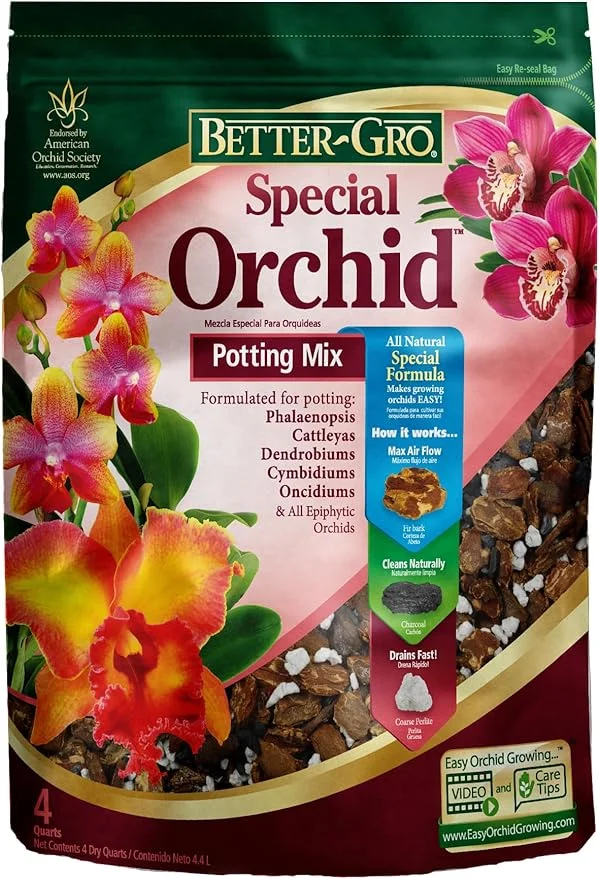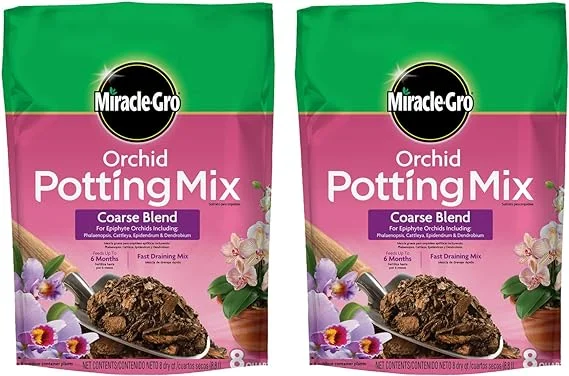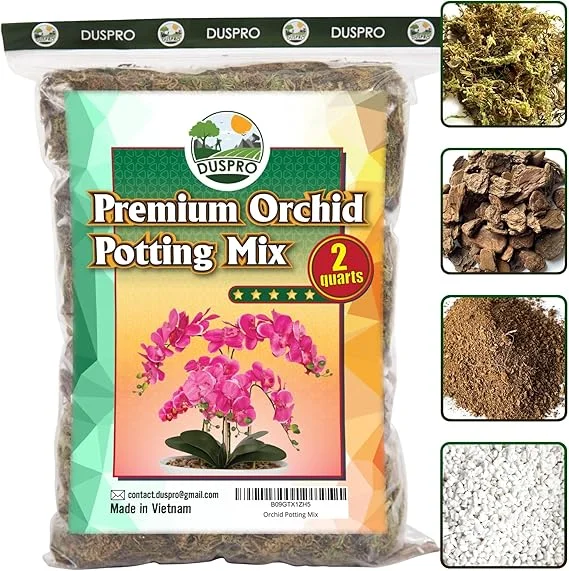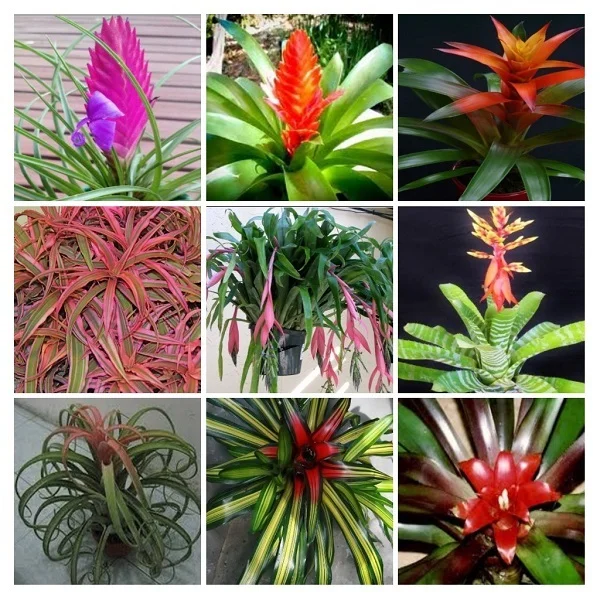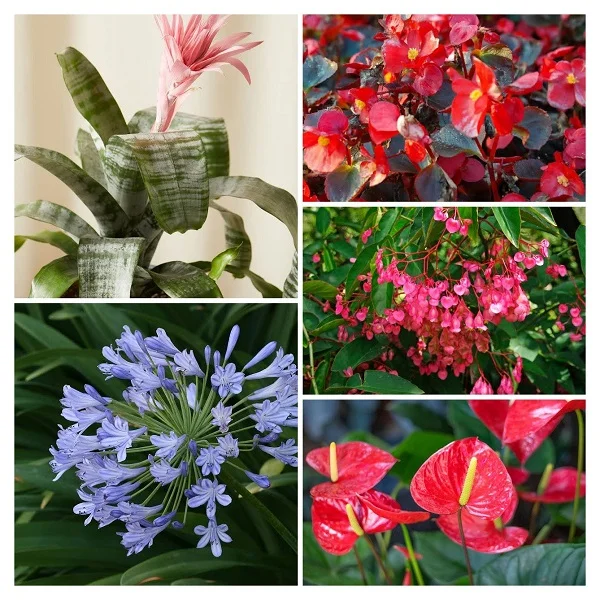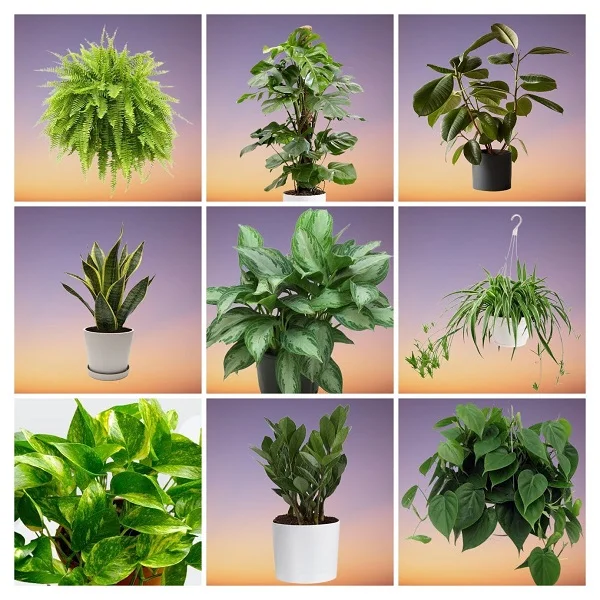How to Grow and Care for Laelia Orchids Indoors
Some links in this post may be affiliate links
Laelia Orchids grow best in bright indirect light, warm and humid conditions and moderately moist, rich, well-drained, orchids potting soil coupled with fortnightly feeding in the growing season.
The Laelia Orchids are popular orchids grown for their large, strikingly colorful flowers and ease of care.
The flowers comprise of petals which are of a thinner texture than the sepals but both are of similar shape but the sepals are narrower. The lip (lowermost petal) is free from the arched flower.
Laelia Orchids are compact, mostly herbaceous plants with a laterally compressed pseudobulbs. One to four leathery or fleshy leaves are born near the top of each pseudobulb. The leaves are broadly ovate to oblong.
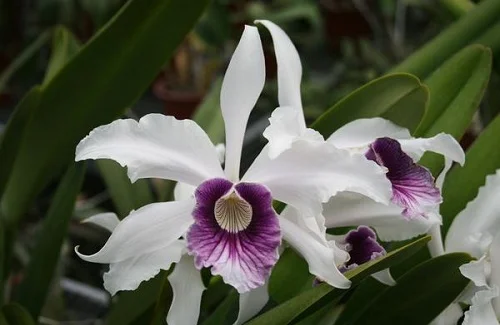
Botanical name: Laelia
Subfamily: Epidendroideae
Tribe: Epidendreae
Subtribe: Laeliinae
Origin
Laelia is a genus of orchids found in areas of subtropical or temperate climate in Central and South America, mostly in Mexico from sea level to mountain forests.
Majority of Laelia Orchids grow on trees (epiphytes) and a few grow on rocks (lithophytes). It is important to research the particular Laelia Orchid you have in order to determine its specific requirements.
The high elevation varieties of Laelia Orchids will require cooler temperatures and plenty of sunlight. Lower elevation varieties of Laelia Orchids will benefit from higher temperatures. Laelia Orchid varieties from the tropical forests require warmer temperatures and higher humidity.
The genus is abbreviated L in trade journals. Most of the Laelia Orchids available today are hybrids. Pink, white, red and purple flowered varieties are available.
Toxicity
Laelia Orchids are non-toxic to both humans and pets. They are safe to grow indoors.
Related Plants
Laelia Orchids are closely related to the genera Cattleya and Brassavola with which they have been used extensively in hybridization.
Where to Buy Orchids
If you would like to add orchids to your collection, you may acquire them online from Etsy (Link to Etsy).
Laelia Orchids Care Indoors
Laelia Orchids blooms bright indirect light of at least 10 hours per day, average warmth of 18-290C, moderate humidity of 50-55% and moderately moist, fertile, well-drained, orchids soil coupled with fortnightly feeding during the growing season.
Repotting Laelia Orchids is needed when it has outgrown its pot and the new growth reaches out over the edge of the pot. Pruning is necessary to keep it neat as well as encourage more blooms. Keep reading for a detailed account on these growing conditions and how to achieve them.
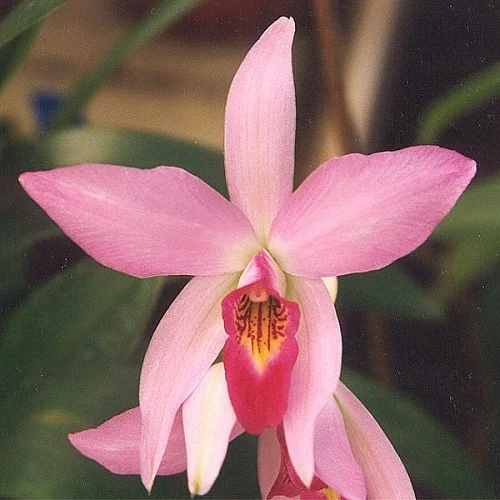
Light Requirements
Laelia Orchid grows best in bright indirect light of at least 10 hours per day. Keep it away from direct sunshine to avoid sun scorch on the leaves.
Where the natural lighting is not enough instal grow light to supplement it. Check out these full spectrum grow lights on Amazon.
Regularly turn the pot to ensure that the orchid gets adequate light on all sides to prevent lop-sided growth.
Watering
Water Laelia Orchid thoroughly during the growing season and allow the top half of the soil to dry out between waterings. Decrease watering during the cold season as growth is minimal at this time but do not allow the soil to dry out completely..
Being tropical plants, Laelia Orchids wil experience shock if watered with too cold water. Therefore, water these orchids with water that is at room temperature.
Like other orchids, Laelia Orchids are sensitive to chlorine and other chemicals dissolved in water. As such water these orchids with chlorine-free water only. Avoid wetting the foliage as it can lead to fungal diseases like leaf spot and powdery mildew.
Laelia Orchids like Dendrobium Phalaenopsis Orchids are more tolerant of dry soil conditions due to the presence of pseudobulbs and their thick leaves. As such take care not to overwater them as it may begin rotting.
Temperature and Humidity
The best temperatures for Laelia Orchid are between 18-290C. Warmer days and cooler night temperatures with a difference of 10-150C are ideal this Orchid. The cool nights are essential to trigger flowering. Keep it away from drafty situations to avoid sudden changes in temperature which can negatively affect the growth.
Make sure you know which variety of Laelia Orchids you have as the higher elevation varieties require cooler temperatures. The lower elevation varieties require warmer temperatures. Tropical forests varieties will require warmer temperatures and higher humidity.
Moderate humidity of 50-55% is ideal for Laelia Orchids. Where the air is too dry, set the pot on a wet pebble tray or use a cool mist humidifier to raise humidity. Learn more on how to raise humidity for houseplants.
Do not mist the leaves as it can lead to fungal diseases but occasionally clean them by damp-wiping with a soft cloth. Ensure there is good air circulation as this orchid cannot tolerate hot and stuffy conditions.
Fertilizer
Feed Laelia Orchid every 2 weeks during the growing season with a weak solution of a water-soluble, orchid fertilizer to encourage a lush growth. Withhold feeding in the cold season as growth is minimal at this time. Do not feed an orchid that is in flower.
It is better to err on the side of underfeeding than overfeeding. Overfeeding a Laelia Orchid may result in loss of roots and thus death of the orchid. If you overfeed this orchid, it can also lead to vegetative growth at the expense of flower production.
Potting Mix
The best potting mix for Laelia Orchid should be rich in organic matter, loose, free-draining bark soil to prevent it from getting soggy while providing the required nutrients. Most orchid potting mixes are ideal for this orchids as they drain easily.
Repotting
Laelia Orchids bloom best when they are pot-bound. Repot it only when growth begins to suffer, when it has outgrown its pot and the new growth reaches out over the edge of the pot or when the soil has broken down completely.
Basically repotting Laelia Orchid every 2-3 years should be adequate. Repot only when new growth begins, shortly after blooming is over.
Use a pot with proper drainage holes or slits as the roots need good air circulation.
The pot should be only 1 size larger than the current one. The best soil should be loose, free-draining, bark soil. Take a look at these ceramic orchid pots with a free slotted orchid pot liner on Amazon.
When repotting a Laelia Orchid, shake off excess soil and trim off any dried and shrivelled pseudobulbs. The large Orchids can be divided to propagate new plants.
Pruning
Pruning Laelia Orchids is easy. Remove dead and diseased leaves by cutting them at the base with sharp scissors or a knife. When flowering is over, cut the flower stalk 1 inch above the 3rd node from the bottom to encourage more flowers.
Propagation
Laelia Orchid propagation can be done from the pseudobulb division at the beginning of the growing season once flowering is over.
How to propagate Laelia Orchid by pseudobulb division
Gently split the pseudobulb into sections and ensure there are at least 3 shoots on each section.
Seperate the roots attached to each section from the mother root-ball.
Remove the old potting soil attached to the roots of the sections and place each section in the center of the pot.
Bury the roots of the section in the soil while ensuring that the bottom of the pseudobulb is level with the top of the soil.
The best pot should be about 1-2 inches larger than the pseudobulb section. Ensure the pot has enough drainage holes and slits to prevent root-rot of the section.
Place the set up in a warm, well-lit place away from direct sunlight until the sections have established their own roots.
Water the new Laelia Orchids lightly to enhance root development and stake each newly repotted plant to prevent it from toppling over.
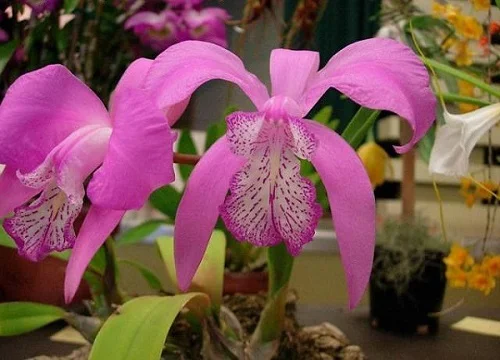
Laelia Orchids Problems
Laelia Orchids growing problems are lack of blooms, black leaf tips, loss of leaf color, leaf spots, drooping leaves, pests and diseases and others. Keep reading for more on these problems and how to fix them.
No blooms (flowers)
Laelia Orchid not blooming (flowering) is due to two possible reasons. One possible reason for lack of blooms is too little light. Position the orchid to a brighter spot and ensure it is receiving bright indirect light for at least 10 hours per day. Check out this guide on understanding light for houseplants.
The second possible reason for Laelia Orchid not blooming (flowering) is overfeeding which can result in vegetative growth at the expense of flowers production. Feed the orchid every 2 weeks during the growing season with a weak solution of a water-soluble, orchid fertilizer. Learn how to feed houseplants.
Brown soft leaf spots
Laelia Orchid brown soft leaf spots are an indication of leaf spot disease. Remove the affected leaves immediately to prevent further spread and treat it with neem oil as per the manufacturer's recommendations.
Dark-green leaves
Laelia Orchid dark-green leaves indicate that the orchid is not getting enough light. Move the orchid to a brighter spot where it will receive bright indirect light or use a grow light to supplement it. The leaves of a Laelia Orchid that is receiving the correct light should be light-green.
Leaf tips black and dying
Laelia Orchid leaf tips black and dying are due to the presence of chemicals like chlorine and flourides in the water or accumulation of salts in the soil. Use chlorine-free water only and flush out accumulated salts from the soil by running a stream of water through the soil for about 10 minutes until it comes out through the drainage holes.
Brown, hard, dry leaf spots
Laelia Orchid brown, hard, dry leaf spots are sunscorch marks due to exposure of the Orchid to direct sunshine. Move the orchid to a shadier spot or shield it from hot direct sunshine to prevent sunscorch marks.
Mold on the leaves
Laelia Orchid mold on the leaves is an indication of powdery mildew disease. Misting the leaves may lead to mildew growth if the water does not evaporate quickly. Ensure good air circulation for the orchid and stop misting it.
Limpy and droopy leaves
Laelia Orchid limpy and droopy leaves are caused by underwatering. Water the orchid thoroughly, maintain the soil consistently moist and allow only the top half of the soil to dry out between waterings but never allow the soil out completely.
Yellowish leaves
Laelia Orchid yellowish leaves indicate that the orchid is getting too much light. Move the orchid to a shadier spot away from direct sunlight. The leaves of a Laelia Orchid that is receiving bright, indirect light should be light-green.
You liked it? Share on social media.
Related Content
Amazon Associates Disclosure
Homeplantsguide.com is a participant in the Amazon Services LLC Associates Program, an affiliate advertising program designed to provide a means for sites to earn advertising fees by advertising and linking to amazon.com.
